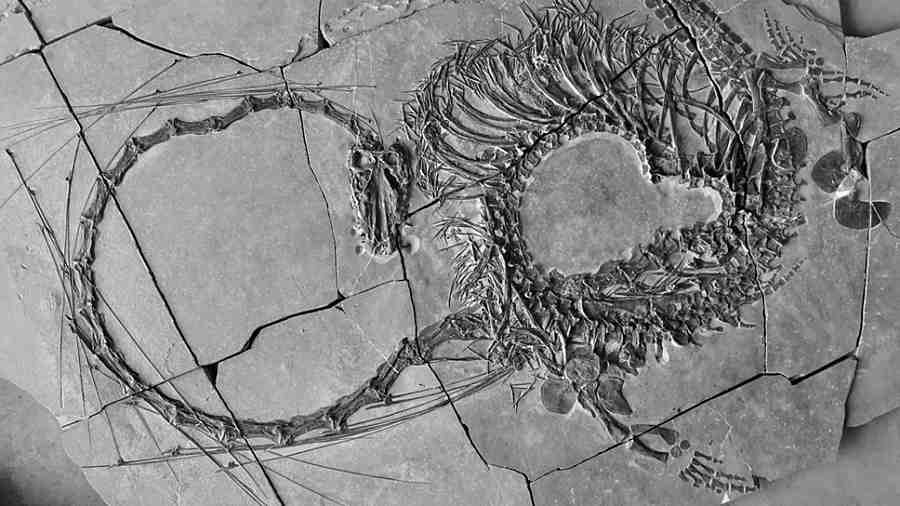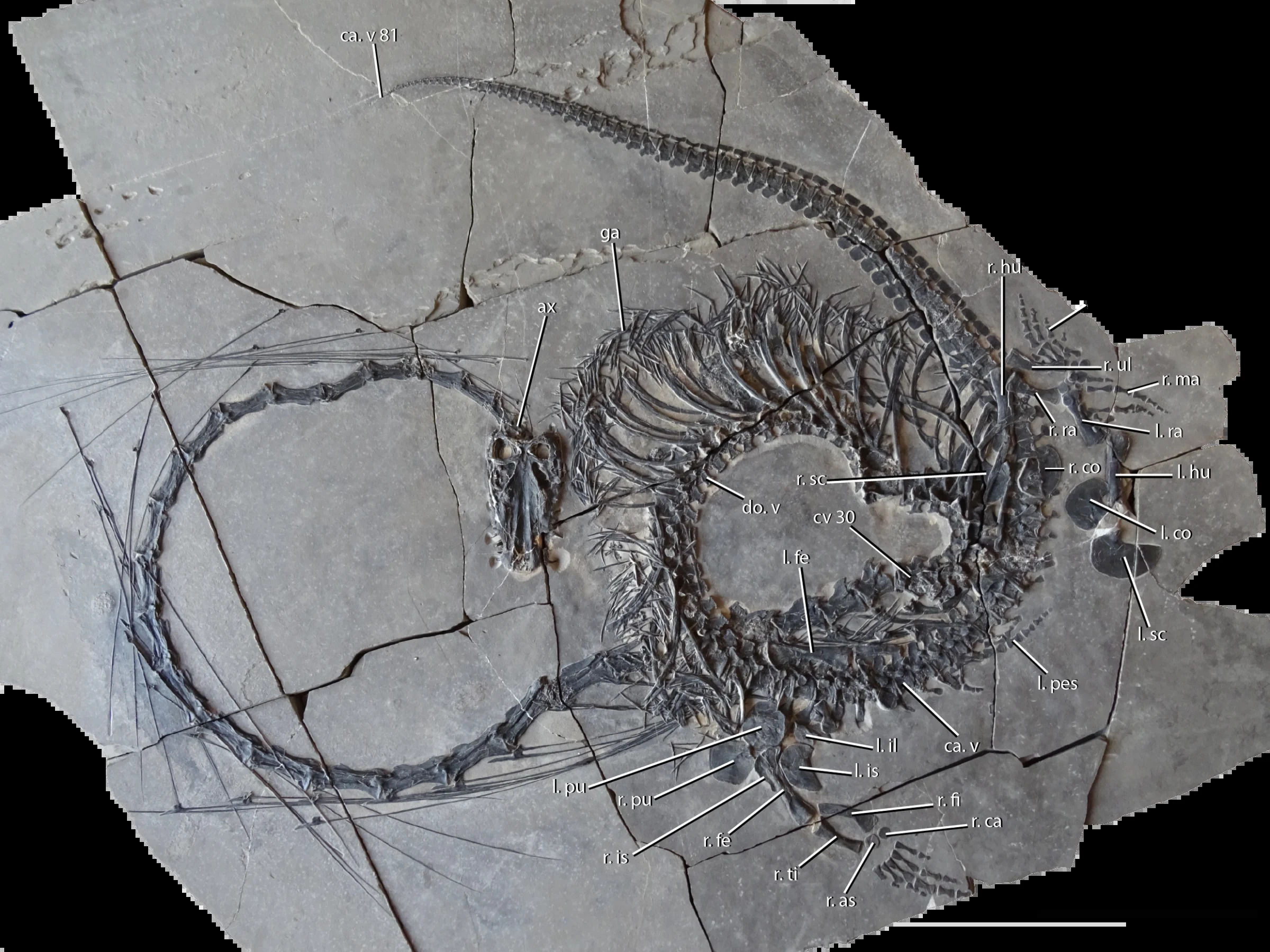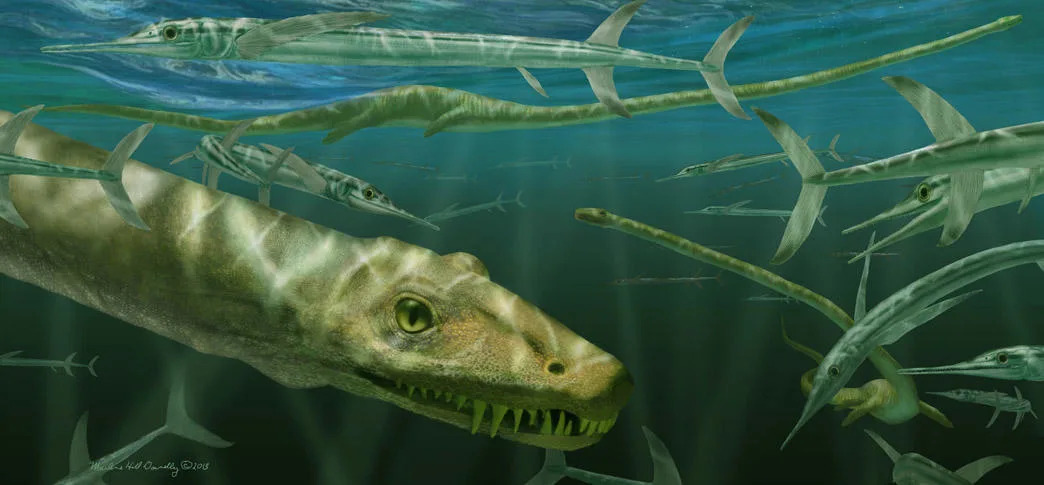Mon 26 February 2024:
Scientists have discovered a new and wonderfully complete fossil believed to be from a 16ft (5m) long aquatic reptile that lived during the Triassic epoch.
According to scientists, the creature is approximately 240 million years old and has been dubbed a “dragon” due to its very long neck. It is also known as Dinocephalosaurus orientalis, a species first identified in 2003.
This recently discovered fossil helped scientists to examine the entire anatomy of the odd prehistoric beast. An international team discovered the fossil in Guizhou Province, southern China, and it was then shown at the National Museums Scotland.
The 240-million-year-old fossil is 16 feet long and has 32 separate neck vertebrae – an extremely long neck. / Credit: National Museums of Scotland
Dr Nick Fraser, who was part of the international team which closely studied the fossil, said that for the first time, scientists have been able to locate the fossil in full. He said that it was “a very strange animal”.
“It had flipper-like limbs and its neck is longer than its body and tail combined,” Dr Fraser said.
The researcher said that the animal’s “long, bendy and flexible neck”, which has 32 separate vertebrae, might have given a hunting advantage and allowed Dinocephalosaurus orientalis to search for food present in crevices under the water.
The scientists discovered the fossil in ancient limestone deposits in southern China.
“This discovery just adds to the weirdness of the Triassic,” said Dr Fraser, while speaking to BBC News. “And every time we look in these deposits, we find something new,” he added.
Scientists claimed that the animal appeared similar to Tanystropheus hydroides which is a marine reptile from the Middle Triassic period.
“Both reptiles were of similar size and have several features of the skull in common, including a fish-trap type of dentition. However, Dinocephalosaurus is unique in possessing many more vertebrae both in the neck and in the torso, giving the animal a much more snake-like appearance,” the research team said, as reported by ABC News.
With its flippered limbs and “exquisitely preserved” fishes in its gut, the reptile was “clearly very well adapted to an oceanic lifestyle,” the international team continued.
Experts from Scotland, Germany, the US, and China were among the nations represented on the team. The article was published in the journal Earth and Environmental Science: Transactions of the Royal Society of Edinburgh and described a collection of new fossils belonging to the animal.
SOURCE: INDEPENDENT PRESS AND NEWS AGENCIES
______________________________________________________________
FOLLOW INDEPENDENT PRESS:
WhatsApp CHANNEL
https://whatsapp.com/channel/0029VaAtNxX8fewmiFmN7N22
![]()
TWITTER (CLICK HERE)
https://twitter.com/IpIndependent
FACEBOOK (CLICK HERE)
https://web.facebook.com/ipindependent
YOUTUBE (CLICK HERE)
https://www.youtube.com/@ipindependent
![]()
Think your friends would be interested? Share this story!







